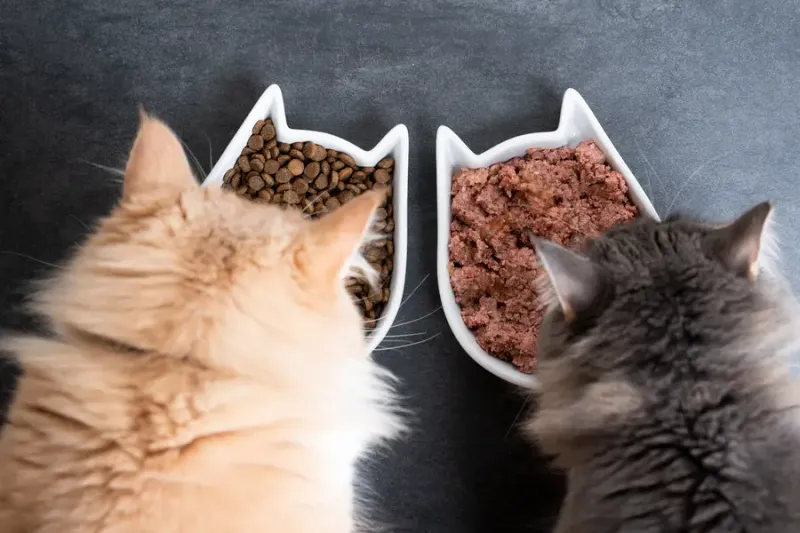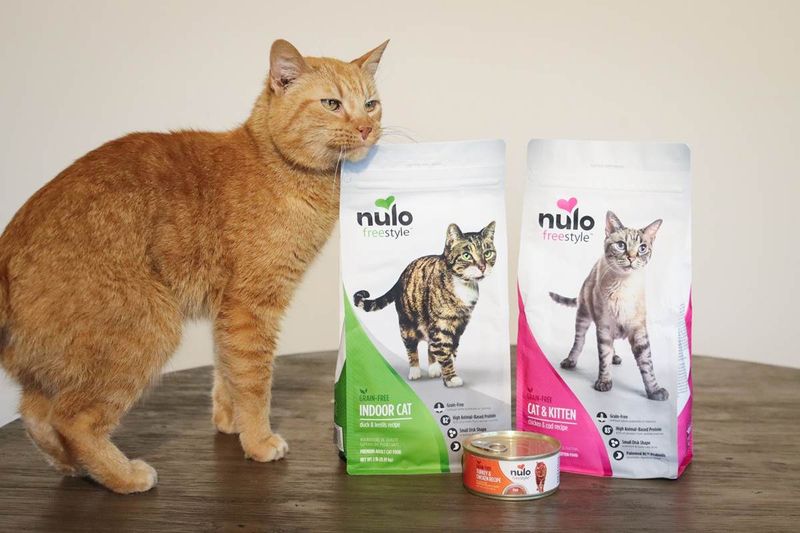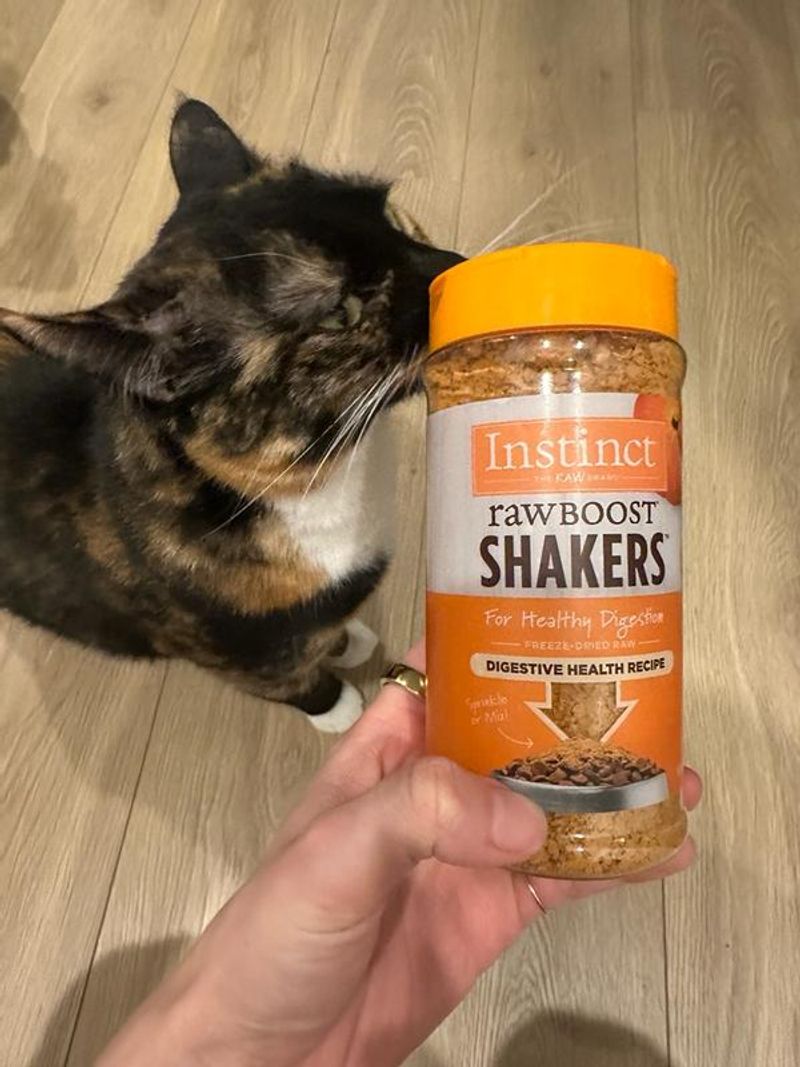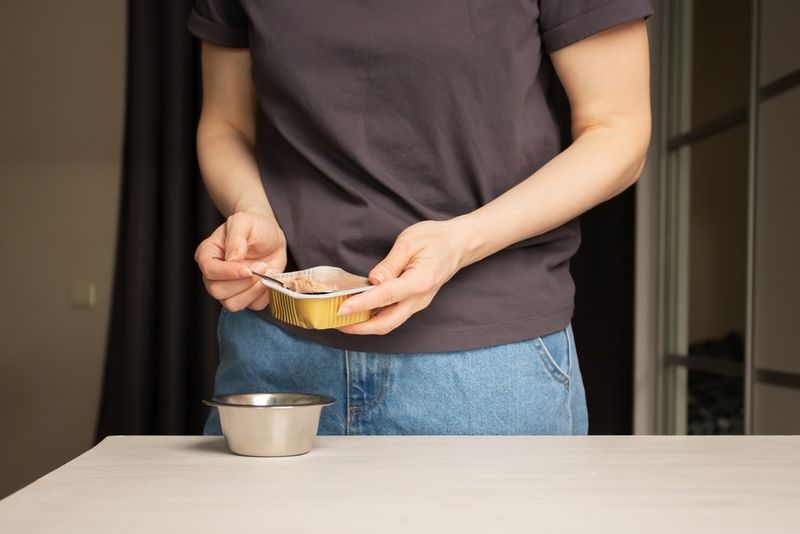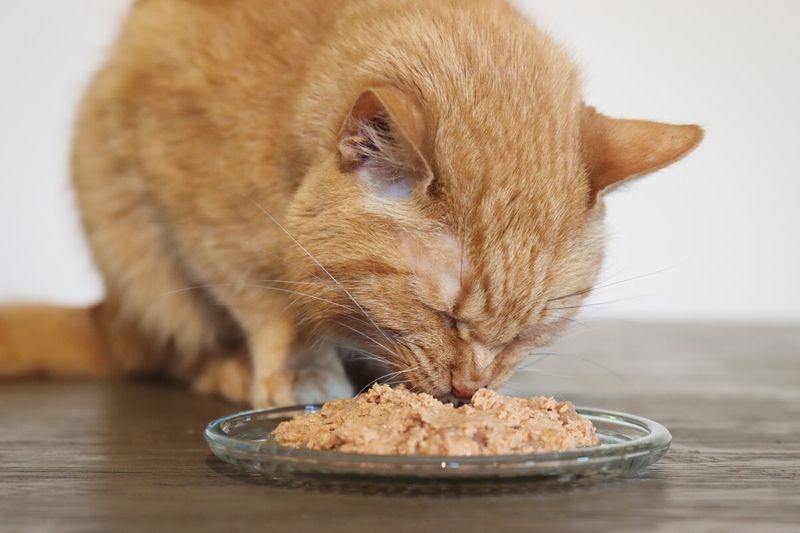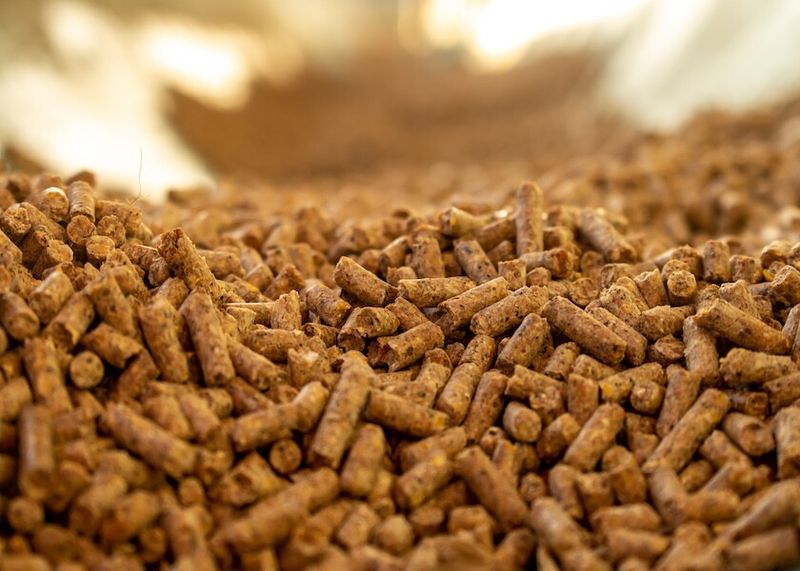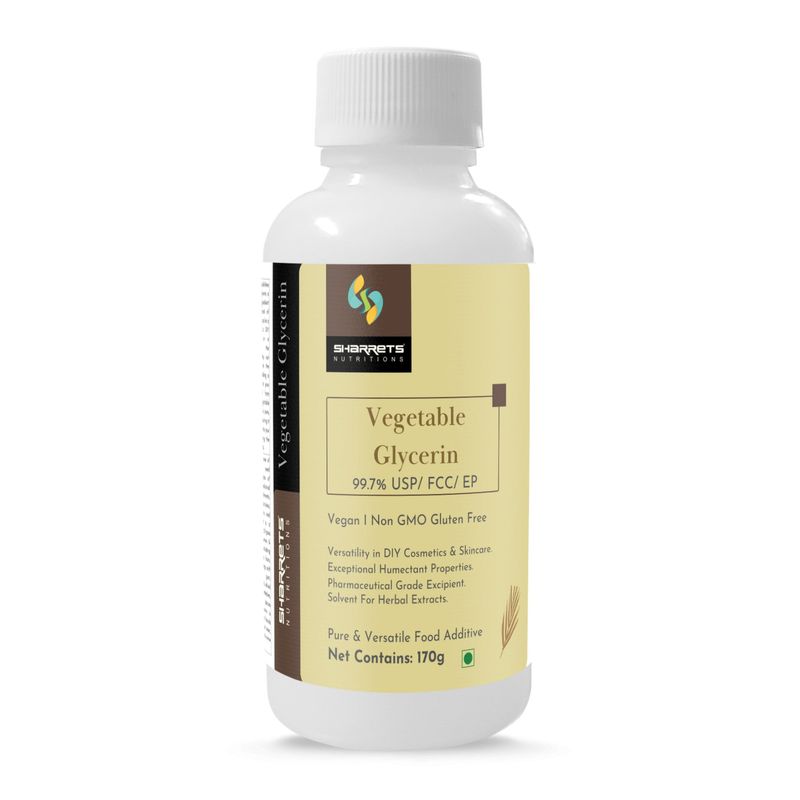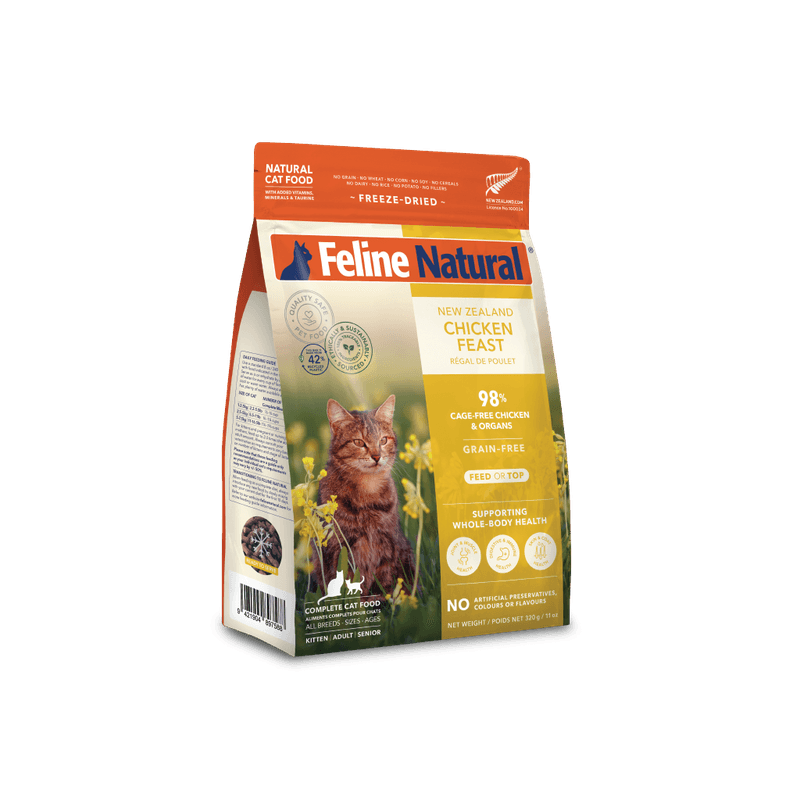📖 Table of Content:
- 1. Preservatives (e.g., BHA, BHT, Ethoxyquin)
- 2. Artificial Colors (e.g., Red 40, Yellow 5, Blue 2)
- 3. Flavor Enhancers (e.g., Animal Digest, Hydrolyzed Protein)
- 4. Binders (e.g., Guar Gum, Carrageenan, Xanthan Gum)
- 5. Fillers (e.g., Corn, Wheat, Soy)
- 6. Anti-Caking Agents (e.g., Silica, Calcium Silicate)
- 7. Humectants (e.g., Glycerin, Propylene Glycol)
- 8. Synthetic Vitamins and Minerals (e.g., Taurine, Vitamin D3, Zinc Sulfate)
When it comes to feeding our felines, many of us trust that the contents of commercial cat food are carefully formulated to support their health. But a closer look at the ingredient list can reveal a surprising array of additives—some helpful, others more controversial. These substances are often included not for nutrition, but to improve shelf life, texture, flavor, or visual appeal.
While some additives serve essential roles, such as preserving freshness or delivering vital nutrients, others may raise concerns among pet owners. Ingredients like artificial colors or synthetic preservatives might sound alarming, and it’s not always clear whether they’re beneficial or potentially harmful. Understanding what each additive does—and why it’s included—can help you make more informed choices about your cat’s diet.
In this article, we’ll explore eight of the most common additives found in commercial cat food. From flavor enhancers to fillers, we’ll break down what they are, why they’re used, and what impact they may have on your cat’s well-being. Whether you’re a first-time cat owner or a seasoned pet parent, this guide will give you insight into what’s really going into your cat’s bowl.
1. Preservatives (e.g., BHA, BHT, Ethoxyquin)
In the world of commercial cat food, shelf life is critical. Preservatives are used to slow the oxidation of fats and prevent spoilage. Synthetic ones like BHA, BHT, and ethoxyquin are frequently added to dry foods to keep them stable over time. Although generally approved in small amounts, these chemicals have sparked debates over potential health risks. Natural alternatives, such as mixed tocopherols (a form of vitamin E), are increasingly favored by premium brands. While synthetic preservatives can prolong freshness, long-term exposure is still being studied for safety. As a result, many cat owners now scan labels carefully to avoid controversial compounds.
2. Artificial Colors (e.g., Red 40, Yellow 5, Blue 2)
At first glance, brightly colored kibble may seem more appealing—but it’s not for the cats. Artificial colors are used to make food visually attractive to humans, not to enhance feline health or taste. These dyes, such as Red 40 and Yellow 5, are purely aesthetic and carry no nutritional benefit. Despite their common use, some studies have linked artificial dyes to behavioral and allergic issues in animals. Consumers are increasingly pushing back, opting for foods with a more natural appearance. Cats, being colorblind to many hues, don’t benefit from these additives at all. Removing artificial coloring is a small but meaningful step toward cleaner pet nutrition.
3. Flavor Enhancers (e.g., Animal Digest, Hydrolyzed Protein)
Even the pickiest cats can be persuaded by flavor enhancers. These additives are designed to improve the palatability of cat food, making it more enticing for feline taste buds. Ingredients like animal digest—often made from enzymatically broken-down animal tissues—are sprayed onto kibble after cooking. Though the term may sound unappealing to humans, cats find these scents and tastes irresistible. Hydrolyzed proteins are also used to break down allergenic compounds while intensifying flavor. For cats with sensitive appetites, flavor enhancers may be essential for maintaining proper intake. Still, transparency in labeling remains important to help owners understand what their pets are actually eating.
4. Binders (e.g., Guar Gum, Carrageenan, Xanthan Gum)
To maintain a consistent texture in canned or semi-moist foods, binders are often added. Gums like guar, xanthan, and carrageenan help thicken the mixture and keep it homogenous. This smooth, uniform texture is key to consumer perception and feeding convenience. While binders are generally recognized as safe, carrageenan in particular has drawn concern over possible inflammatory effects. Research is ongoing to determine whether food-grade carrageenan poses real risks to feline health. Despite potential controversy, these substances play a vital role in food production. When chosen carefully, binders can enhance quality without compromising safety.
5. Fillers (e.g., Corn, Wheat, Soy)
Not all ingredients in cat food are strictly necessary for a carnivorous diet. Fillers such as corn, wheat, and soy are often added to reduce cost and increase bulk. Though they offer some carbohydrates and fiber, they’re not biologically essential for obligate carnivores like cats. In fact, some cats may develop sensitivities or allergies to these ingredients. Many low-cost or mass-market brands rely heavily on fillers to meet profit margins. Higher-quality foods tend to minimize or eliminate these elements in favor of meat-based proteins. Reading labels closely can help identify if fillers are taking up more space than nutrients.
6. Anti-Caking Agents (e.g., Silica, Calcium Silicate)
Clumping can be a major issue in powdered or dry pet foods. To combat this, anti-caking agents like silica and calcium silicate are included to ensure a smooth, even texture. These substances absorb moisture and prevent ingredients from sticking together. While typically inert and safe, they still fall under the category of non-nutritive additives. Their use is especially common in vitamin premixes and supplement blends. Because they improve flow and mixing, they contribute to the consistency of the final product. Though rarely a point of concern, they are another example of the many technical considerations behind cat food formulation.
7. Humectants (e.g., Glycerin, Propylene Glycol)
Moisture control is crucial in soft or semi-moist cat food. Humectants like glycerin and propylene glycol help retain moisture without allowing spoilage. These compounds keep food chewy and palatable over time. Propylene glycol, however, has stirred debate—it’s banned in dog food by the FDA due to toxicity, though it remains allowed in cat food. Glycerin, a more natural humectant, is often seen in treats and semi-moist kibble. With proper regulation, humectants serve a functional role, but overuse may warrant caution. Pet owners seeking minimal processing may choose to avoid products with excessive moisture-retaining agents.
8. Synthetic Vitamins and Minerals (e.g., Taurine, Vitamin D3, Zinc Sulfate)
No matter how wholesome the base ingredients, most commercial cat foods need nutrient fortification. Synthetic vitamins and minerals are added to ensure the food meets AAFCO (Association of American Feed Control Officials) nutritional guidelines. Taurine is one such nutrient that’s especially crucial for cats, as deficiency can lead to blindness or heart problems. Without fortification, processed foods would often fall short of a complete and balanced diet. Synthetic sources are stable and reliable, even if they sound less “natural” on the label. It’s important to recognize that not all synthetic additives are harmful—in fact, many are lifesaving. By bridging nutritional gaps, these additives help ensure long-term feline health.

